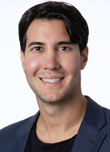Combining 3 Emerging Technologies For Improved Aesthetic Devices
By Michael D. Mirmanesh, MD, The Garden Plastic Surgery

Aging brings with it unwelcome facial changes: skin gets thinner and prone to wrinkles and the deterioration of connective tissue reduces the skin's strength and elasticity. In addition, a loss of volume causes loss of volume in the cheeks, sagging jawline, lines around the mouth, and slack lower eyelids. But aging also goes beyond the surface of the skin, affecting the muscles, bones, and soft tissues below.
Today, patients are looking for nonsurgical and natural-looking options that still give them results comparable to what is seen with a face-lift. Demand is stronger than ever, with nonsurgical procedures such as injectables and laser skin treatments climbing by 44%.1 At the same time, medical device companies as well as plastic surgery practices are looking to build revenue by adding proven technological advancements that offer sought-after, natural, injection-free, yet dramatic results.
Three emerging technologies enable plastic surgeons to finally fight the signs of aging where they truly begin — in the muscles — as well as to address other skin concerns in one treatment. Let’s look at Dynamic Muscle Stimulation (DMSt) technology, TriPollar RF, and RF ultrathin microneedling, and combining them in the same device.
Dynamic Muscle Stimulation (DMSt)
Clinically, a face-lift improves the jowls, nasolabial folds, cheeks, and midface, giving a toned, well-defined, and rejuvenated face shape by addressing the muscles that weaken and sag with age. Now we can do the same thing in a noninvasive, nonsurgical way with an instantaneous result that is also natural looking.
DMSt is used to target different layers of muscles, thereby improving and enhancing muscle tone. This safe, noninvasive concept has recently been applied in aesthetic medicine for patients seeking a youthful, toned, and natural appearance, with no surgery, injections, pain, or downtime. DMSt works by activating muscles with electrical stimulation that is generated by an external source. This stimulation causes the muscles to expand and contract, enabling users to target specific muscles to create a toned and lifted look. These muscles interdigitate with the superficial musculoaponeurotic system, or SMAS, which is the same area we plastic surgeons target when we perform a face-lift.
TriPollar RF
Using TriPollar probes to apply an appropriate amount of heat to the skin can be done at the same time as DMSt. The probes act similar to a hot stone massage, draining the lymphatics as well as tightening skin and improving its texture for a great outcome. Using three probes as opposed to one (monopolar) or two (bipolar) allows individual customization for each patient, it is much easier to perform, and it is safer for clients with much less chance of burning or marking the skin. By regenerating collagen and elastin,3 it thickens and strengthens the dermal layer to treat facial wrinkles and it gains a 50% increase in dermal thickness compared to the baseline.7
RF Microneedling
RF ultrathin microneedling uses the thinnest needles on the market for the least amount of trauma possible, with no numbing and no downtime. The microneedles are about the size of a human hair and are pressed into the skin to heat the collagen and elastin in the dermal skin layer to about 105 to 111 degrees F. The collagen and elastin can then remodel, regenerate, and realign for the clinical effect of an improvement in fine lines, wrinkles, acne scars, and pores as well as skin tightening.
Combining The 3 Technologies For Maximum Effect
When combined, the effects of the technologies are even more dramatic, toning muscles, reducing facial wrinkles, and smoothing and resurfacing the skin for a face-lift-like effect.4-6 The DMSt and TriPollar RF are performed together first, for a lifted effect, followed by the ultrathin RF microneedling. It takes less than 30 minutes for immediate visible effects: skin is 80% smoother,4 with 30% fewer wrinkles4 and three times the typical level of hyaluronic acid.6 By doing all three together, every week for typically around five sessions, patients can see an immediate lifting effect and enjoy long-lasting and natural-looking outcomes for anywhere from six to 12 months.
The results are similar to what one would get from more invasive procedures and, for some, it may allow them to bypass fillers and use their own tissue for a natural result with no downtime. At the same time, the triple technologies are also complementary to other offerings.
Adding The Technology To Practice
These technologies can be used on anyone, regardless of age or skin color. Often younger patients in their 20s and 30s are starting to think about getting filler to refresh the descent or falling they are starting to notice in the mid-face and cheeks. Yet they may be hesitant for whatever reason. With these technologies, patients can still be offered a mid-face-lift or a glow for a special event or weekend. As people get into their fourth and fifth decades of life, that’s when they start to get jowls, marionette folds, nasolabial folds, and the falling down cheeks. The true power of the three technologies for those clients is really giving them that face-lift-like effect.
I believe in full price transparency, and I have no problem making sure my clients know exactly how much things will cost. A face-lift and neck lift together costs around $25,000 — it is a lot of hard work, it can be risky, and it is challenging to get a successful, safe outcome. The price is therefore warranted. A neck lift alone is anywhere from $12,000 to $15,000. Compared to these traditional offerings, I am able to charge far less for the triple technologies: I charge $4,000 to $6,000, according to geographic location/cost of living, for the five-session package of Lumenis’ triLift triple technology. Thus, the triple technology enables improved patient access compared to traditional face-lifts and neck lifts.
Conclusion
Aging is more than just what happens on the surface of the skin. It has to do with the muscles, bones, and soft tissues below the skin. Combining the emerging triple technologies in one device allows us to treat the muscles, the dermal, and the epidermal layers in a safe, painless, and noninvasive way that can still give a face-lift-like effect without the downtime of surgery.
References
- The Aesthetic Society releases annual statistics revealing Americans spent over $9 billion on aesthetic plastic surgery in 2020. Press release. The Aesthetic Society, March 30, 2021. https://www.theaestheticsociety.org/media/press-releases/aesthetic-society-releases-annual-statistics-revealing-americans-spent-over-9.
- Mäkelä E, Venesvirta H, Ilves M, et al. Facial muscle reanimation by transcutaneous electrical stimulation for peripheral facial nerve palsy. J Med Eng Technol. 2019;43(3):155-164. doi: 10.1080/03091902.2019.1637470.
- Nussbaum EL, Houghton P, Anthony A, et al. Neuromuscular electrical stimulation for treatment of muscle impairment: critical review and recommendations for clinical practice. Physiother Can. 2017;69(5):1-76. doi: 10.3138/ptc.2015-88.
- Potekaev N, Zhukova O. Evaluation of safety and efficacy of the Maximus System for facial wrinkles. J Cosmet Derm Sci App. 2013;3: 151-156.
- 3Levenberg A. Clinical experience with a TriPollar radiofrequency system for facial and body aesthetic treatments. Eur J Dermatol. 2010;20(5):615-9. doi: 10.1684/ejd.2010.1042.
- Boisnic S, Branchet MC. Ex-vivo study of hybrid energy technology using a human skin model. Eur J Dermatol 2014; 24(1): 46-52 oi:10.1684/ejd.2013.2233.
- Haim Kaplan, Andrea Gat, Clinical and histopathological results following TriPollar™ radiofrequency skin treatments Journal of Cosmetic and Laser Therapy 2009; 11: 78–84 DOI: 10.1080/14764170902846227
 About The Author:
About The Author:
Michael D. Mirmanesh, MD, is in practice at The Garden Plastic Surgery with locations in North Palm Beach and Tampa Bay, FL. He is an award-winning California-trained plastic surgeon, having been educated at The University of California, Davis. He has authored over a dozen plastic surgery publications and multiple book chapters. He may be reached at michaelmirmanesh@gmail.com.
